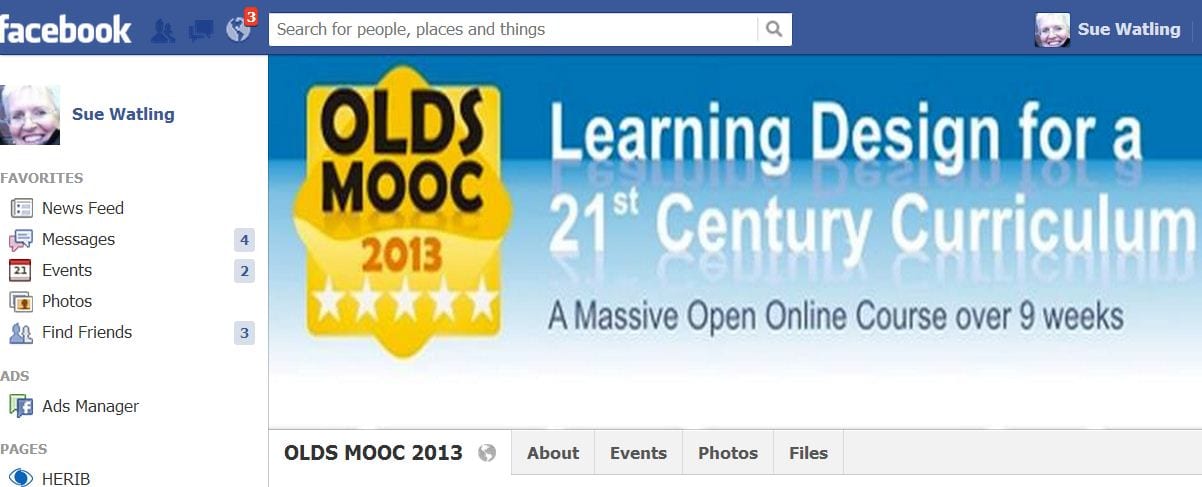Last year I suggested doing a MOOC for Christmas. Participation seemed a good way to experience online learning design but after my first week with OLDsMOOC, I realise how passive my previous MOOCs have been. The challenge of OLDsMOOC is it demands action and integration. OLDsMOOC is too big for lurking. You need the sense of a group with a shared purpose. Otherwise it’s like being in a giant city for the first time; full of iconic landmarks and exciting to be there – but even better with map of the public transport systems and some familiar faces to share it with.
DIY Multimedia at https://groups.google.com/forum/?fromgroups#!forum/olds-mooc-diy-multimedia is taking shape and it’s exciting to be sharing everyone’s contributions in this way. Useful commonalities between OLD and the use of multimedia in teaching and learning are emerging. Both areas sit outside subject specialism. Multimedia is part of being digitally literate. The recognition that digital literacies would benefit from sector wide funding under the JISC Developing Digital Literacies programme was welcome. However, funds tend to go to teams already embedded in digital ways of working with the risk of assumptions made by innovators and early adopters about individual confidence and competence with working in online environments. This also applies to OLD. Experts in face-to-face design and delivery can be left to work out OLD for themselves; this can result in a mass of content posted online with little variety or interaction. A common complaint is ‘I set up a discussion forum but nobody used it!’ Experience of an online course, or MOOC, in particular the loneliness of the long distance learner, or overload of information, is invaluable. OLDsMOOC is experiential learning at its best.
The strange becomes familiar: Facebook has arrived on OLDsMOOC!
Facebook has arrived! After the strangeness of Cloudworks and initiation into Google Groups, the OLDs Facebook site offers a welcome familiar face. Facebook for me has become a useful mechanism for keeping up to date with community groups and organisations as well as family and friends. To see OLDsMOOC appear here was almost a relief; at last, an environment I can integrate into my daily online routine. The link between familiar online environments and retention might be worth further investigatinon.
The OLDs calendar of w/b on Thursdays is another anomaly I’m finding difficult to adjust to. I can’t shift from feeling Mondays is the start of the week. Does OLD work best when operating on a traditional time scale? Another question to reflect on for future practice.

‘Multimedia is part of being digitally literate’ – this caught my eye. A very important point for a number of reasons. Students, to some degree, come to higher education with some, reasonable or even a good deal of exposure to and use of multimedia online – they shoot video on webcams or digital SLRs, the edit content they find online, they post, cut and mashup up images constantly to such a degree that you wonder if their language is non-verbal, like hieroglyphs for the 21st century if you follow the streams of images they collect and share in the likes of Tumblr. But, some will have this has a digital literacy and form of entertainment, some will have done things in class, others might make short films or animations, while others have had little or no exposure at all. Perhaps therefore a cohort of students have to be treated as a group from all over the world for whom ‘multimedia’ is a second or foreign language. I’m trying to talk myself into context here, to take on board the reading I have done as well as my own experience. For sure, even for those who ‘speak this multimedia language’ it is unlikely that they have applied it in a systematic or semi-professional way – as the end result of a careful planning, researching, writing, sharing and ‘construction’ process. To be digitally literate requires an ability to speak and write this language using everyday tools – the end results matters more than how they got there. We know there are a plethora of tools. Lucky them if they have access to an Apple Computer and free software such as iMovies. Many won’t. Might fretting over the software be like having a wide choice of cars to pick from in a car pool but not know how to drive? That either they learn to drive, or find a chauffeur? Or a buddy who can drive? Multimedia creation has a logic to it like putting up flat-pack furniture with thousands of websites or YouTube ‘How to … ‘ clips to show you the way. Preparation, logic … In this context, the multimedia options are a selection of what Gilly Salmon calls ‘e-tivities’ – so there is variety – a piece of video to watch and review, a piece of text to read and answer questions, a set of multichoice q&a … a series of ‘hot spots’ in an image to roll-over and read/listen to before writing in a correct answer and so on.
This might be handy to share. I have it saved in Picasaweb.
A simple flowchart for e-learning creation from one of the many e-learning web agencies down the road in Brighton.